6 Best Compound Dumbbell Exercises (with Pictures!)
Whether you’re stuck at home with only a pair of dumbbells or trying to overcome a muscular imbalance, compound dumbbell exercises are likely the best bet.
While the majority of free weight compound exercises are performed with the use of a barbell and set of weight plates, it is entirely possible to use dumbbells as an alternative - with a few small tweaks to form, that is.
Though there are dozens of compound dumbbell exercises, the most common are generally the same as those performed without dumbbells. These include the chest press, the squat, the deadlift, the overhead (military) press, and some variation of weighted row.
What is a Compound Dumbbell Exercise?
In short, compound exercises are simply movements performed with the use of more than a single muscle group or joint in a dynamic manner. This precludes exercises like the bicep curl or sit-up, where only a single muscle is actually worked to any level of intensity.
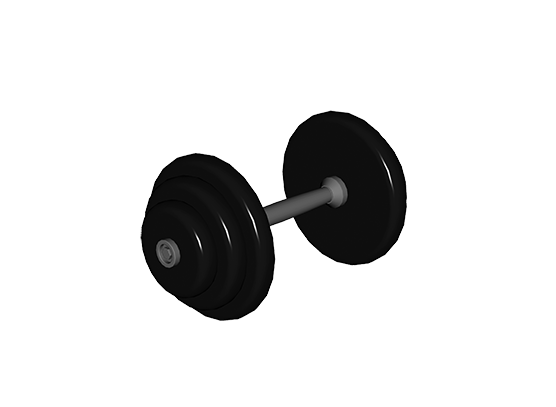
Knowing this, we can see that compound dumbbell exercises are movements involving a dumbbell and the use of more than one muscle at a time.
Such exercises will generally feature a wide range of motion, greater level of exertion and more effective results.
Benefits of Doing Compound Dumbbell Exercises
Unlike other types of compound exercises, the majority of dumbbell-based compound movements involve partially unilateral movement - meaning that each side of the body will work independently of the other, for the most part.
While this does reduce the amount of weight that can be moved, it also helps prevent muscular imbalances and issues relating to dominant-side form errors.
Furthermore, the fact that both sides of the body work independently of the other means that isometric contraction is far more intense than with barbell or machine-based compound exercises - leading to greater development of the forearms, deltoids, core and other muscles that are primarily used as stabilizers.
Compound Dumbbell Exercises
1. Dumbbell Chest Press
One of the most classic examples of a dumbbell compound movement is the chest press; a movement almost identical to the conventional bench press, only without the form cue of a “bar touch point” atop the chest.
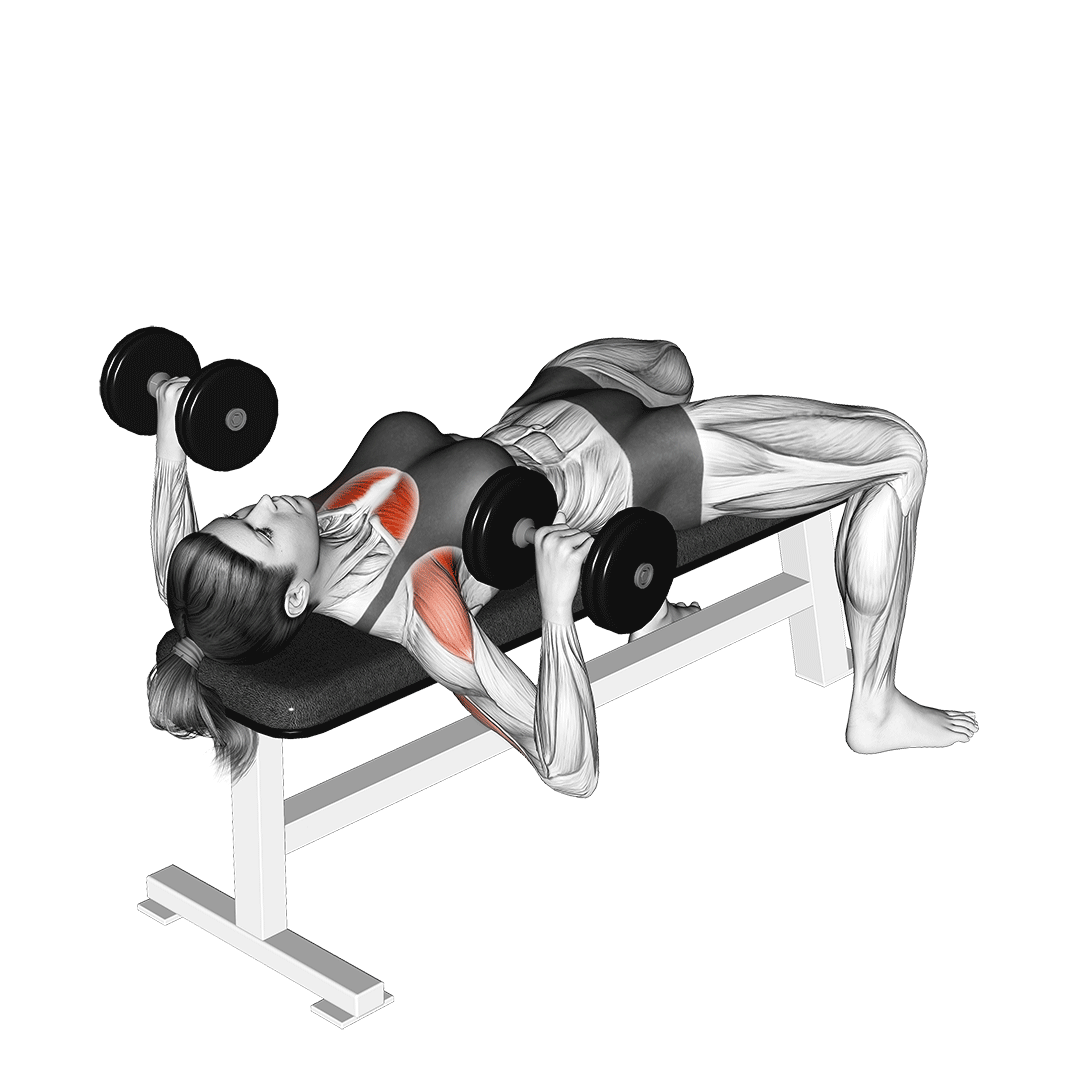
Like the bench press, the dumbbell chest press is a multi-joint compound exercise performed for moderate volume and a moderate level of resistance.
Lifters may further emphasize certain parts of the chest by performing the exercise at a decline or incline, with an inclined torso placing greater emphasis on the pectoralis minor muscles, and at a decline the lower portion of the chest.
Muscles Worked by Dumbbell Chest Press
The dumbbell chest press works the pectorals, triceps brachii and the anterior head of the deltoids.
Purpose as an Exercise
Like most other upper body pushing exercises, the dumbbell chest press usually serves as the main compound exercise in a workout, and is performed so as to build mass and strength in the triceps and chest.
How-to:
Lying atop a bench with the shoulder blades retracted and the arms fully extended over the chest, the lifter will lower the dumbbells until their elbows are parallel with the sides of the torso.
From this point, the lifter will push through the palms of their hands and extend their arms once more, thereby completing the repetition.
2. Dumbbell Squats
As an alternative to the more common barbell back squat, one may choose to perform squats with a pair of dumbbells instead.
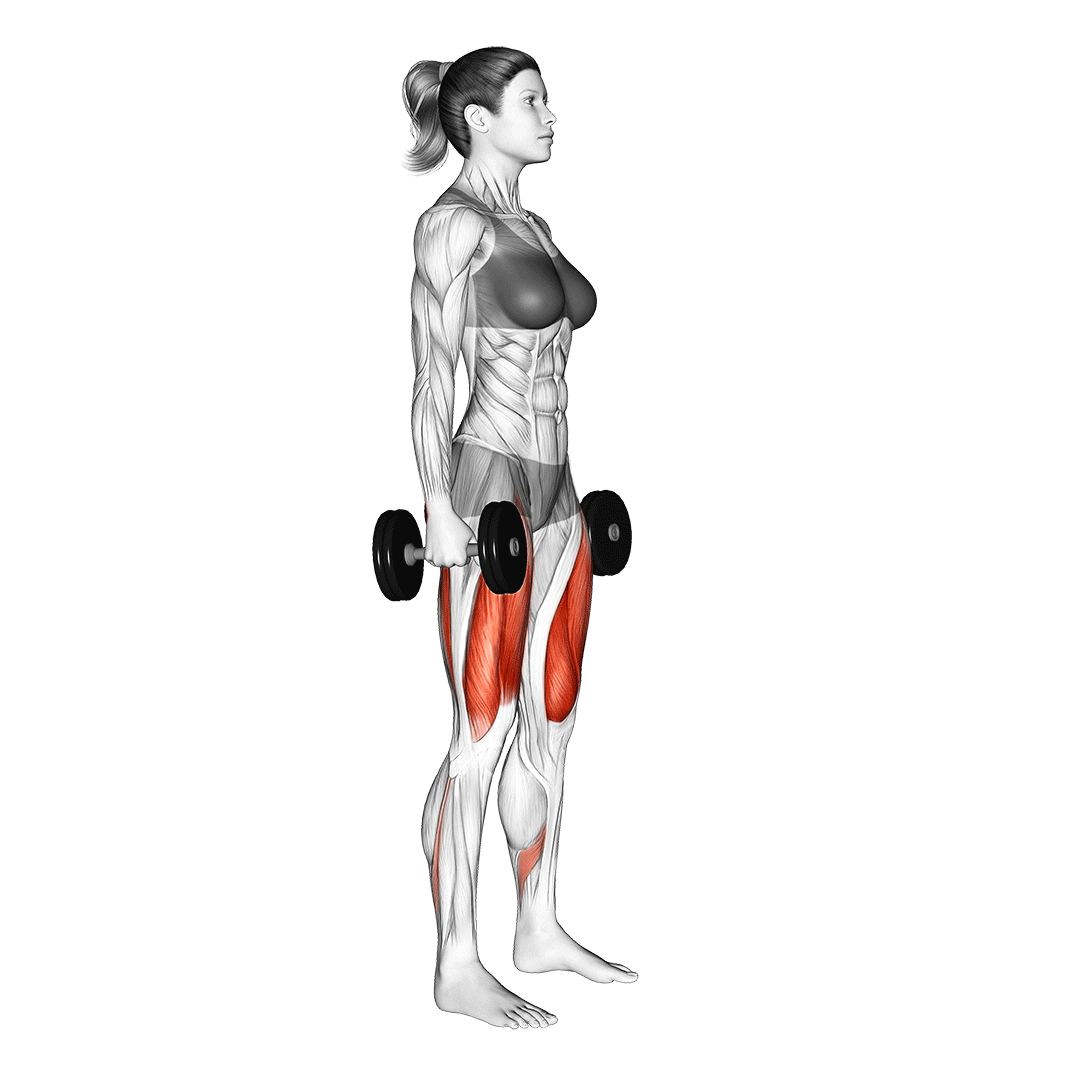
Like other types of squat exercises, dumbbell squats are a multi-joint compound movement performed for low volume and a relatively high amount of resistance.
Where dumbbell squats differ, however, is the angle of resistance; most other squat variations will involve the weight being loaded atop the torso, whereas the dumbbell squat has the lifter gripping the weight in their hands.
This can limit the total maximum resistance possible, and as such dumbbell squats are usually performed for more volume than their barbell-based counterparts.
Muscles Worked by Dumbbell Squats
Dumbbell squats will recruit the glutes, quadriceps and hamstrings in a dynamic and highly intense fashion.
Purpose as an Exercise
Though there are quite a number of other dumbbell-based lower body exercises, few are as simplistic and accessible as the dumbbell squat.
The dumbbell squat is purposed as either a primary or secondary compound exercise for building up strength and mass in the lower body.
How-to:
To perform a repetition of the dumbbell squat, the lifter will stand with their feet set slightly wider than hip-width apart, toes and knees pointing outwards and a pair of dumbbells gripped in their hands.
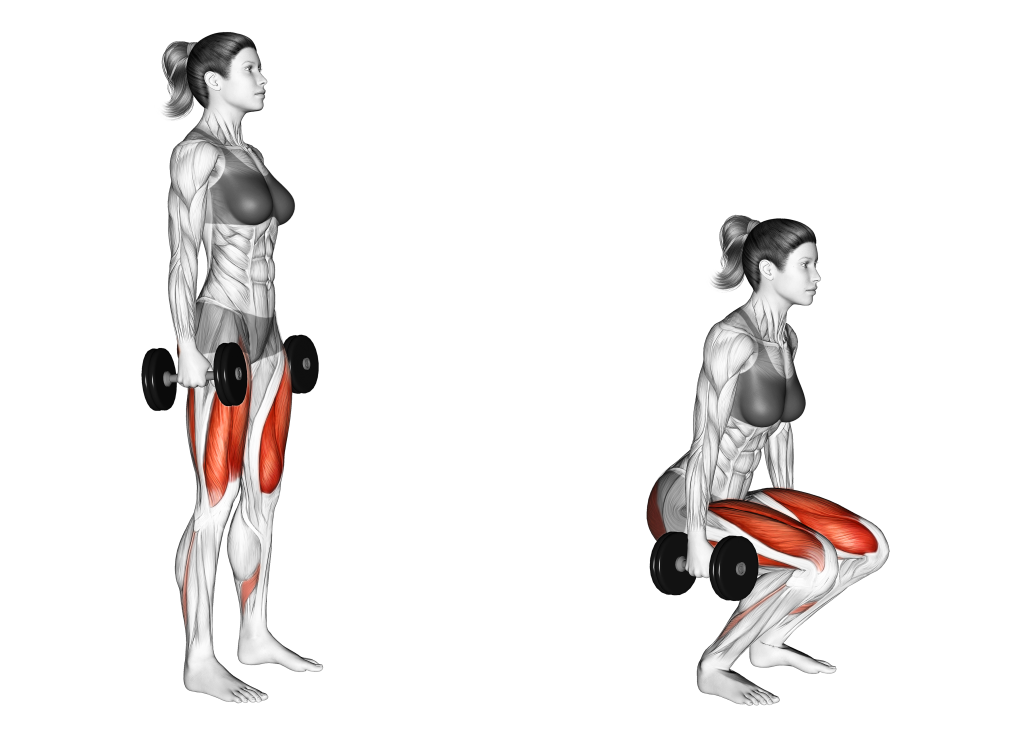
Throughout the exercise, the core must remain contracted and the lower back kept at a neutral curve.
Bending at the hips and knees simultaneously, the lifter will lower themselves until their pelvis is parallel to the knees, before pushing through the heels and rising back to a standing position - thereby completing the repetition.
3. Dumbbell Deadlifts (and Variations)
The deadlift is the very definition of a compound exercise, as it features recruitment of nearly every muscle group in the body alongside being one of the heaviest lifts possible.
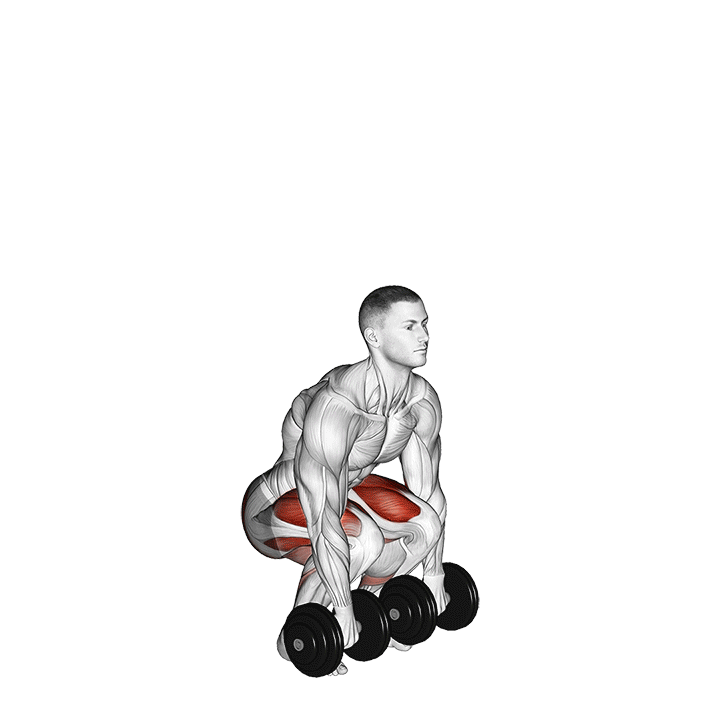
The dumbbell variation of the conventional deadlift is no exception, as it works much the same muscle groups in nearly identical ranges of motion, with the sole difference being the total weight used.
The dumbbell deadlift has also spawned several other variations - all of which further emphasize certain aspects of the exercise.
Stiff legged dumbbell deadlifts or dumbbell sumo deadlifts are just a few examples, and are generally used interchangeably with their more conventional variation.
Muscles Worked by Dumbbell Deadlifts
When a repetition of the dumbbell deadlift is performed, the erector spinae, gluteal muscle group, quadriceps and hamstrings are all recruited to a significant extent.
Purpose as an Exercise
The dumbbell deadlift is used as a primary compound exercise of significant intensity, and is generally performed for building up lower body strength and power in a single highly efficient movement.
In particular, deadlifts of all variations are useful for developing the muscles of the posterior chain.
How-to:
To perform the dumbbell deadlift, the lifter will enter a deadlift stance by squatting downwards with the pelvis pushed back and the chest thrust forwards, the hands gripping a pair of dumbbells resting on the floor.
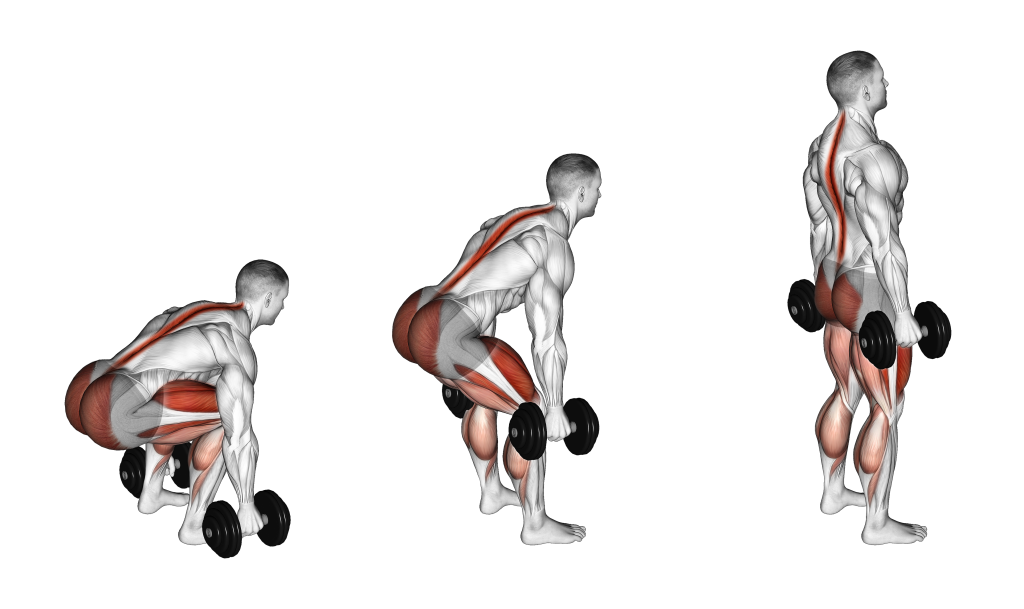
Throughout the exercise, the core muscles must be contracted, the shoulder blades pressed together and the spine kept in a neutral curvature so as to avoid injury.
Beginning the repetition, the lifter will push through their heels and draw the dumbbells from the floor, pushing out the hips and extending the knees until they are in a standing position.
To complete the repetition, the lifter will once again lower themselves back to the original squatting position in a slow and controlled manner.
4. Dumbbell Overhead Press
For training the deltoids in a highly accessible and effective manner, there are few exercises as suitable as the dumbbell-based overhead press.
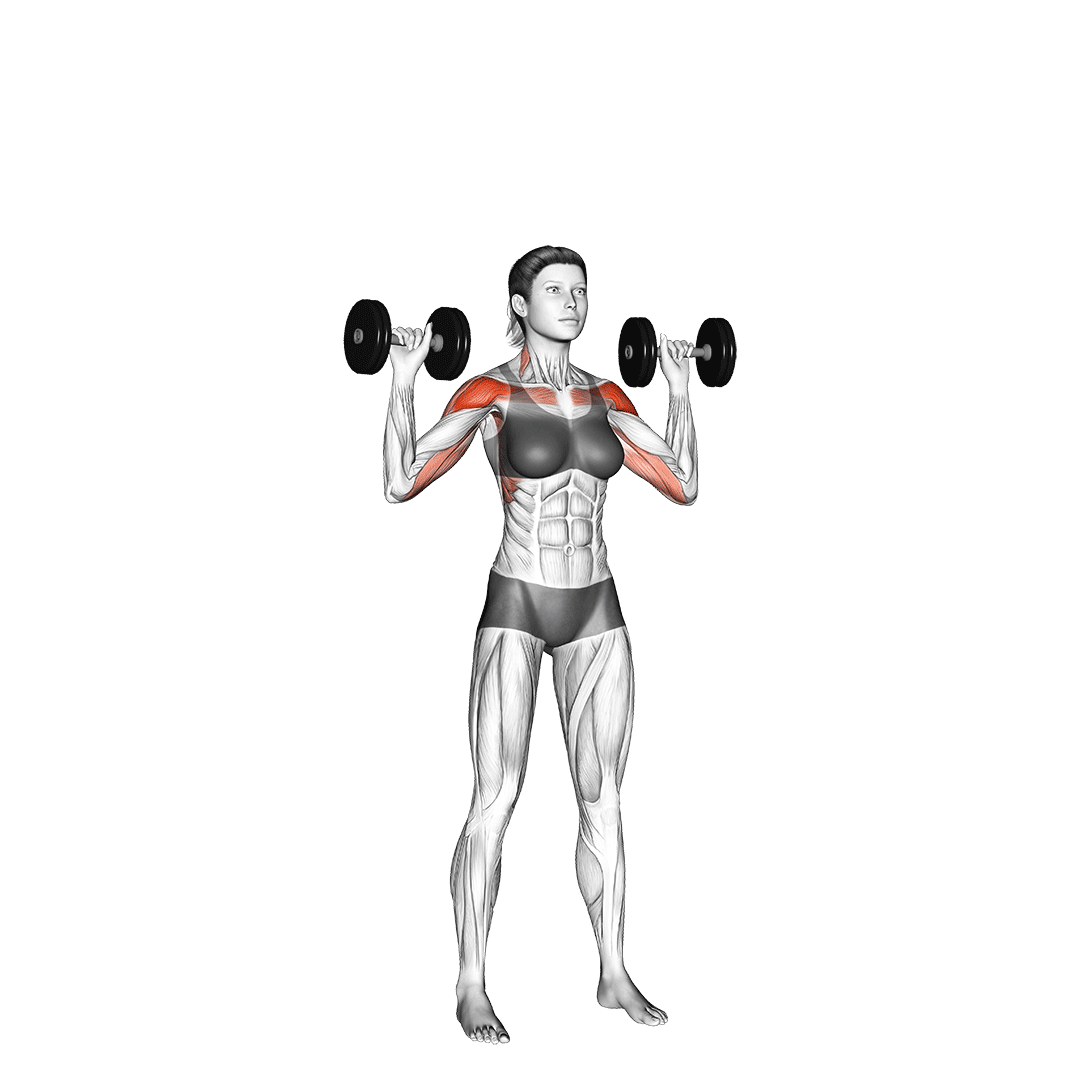
The dumbbell overhead press (also known as the military press or shoulder press) is a multi-joint compound exercise involving the lifter pressing a pair of dumbbells over their head in high-volume sets so as to train all three heads of the deltoids.
Muscles Worked by Dumbbell Overhead Press
The dumbbell overhead press targets all three heads of the deltoids alongside the triceps brachii and the serratus anterior.
Purpose as an Exercise
Used as either a secondary or primary compound movement in upper body workouts, the dumbbell overhead press provides supplementary training to the deltoids in a manner that helps develop proportional size and strength throughout the muscle group.
How-to:
To perform the overhead press with dumbbells, the lifter will stand upright with a pair of dumbbells gripped over their shoulders, palms facing forwards and elbows kept parallel to the torso.
Contracting the core for stability, the lifter will push through their palms and extend their arms overhead. Once the elbows are nearly locked-out and the dumbbells are overhead, the repetition is considered to be complete.
5. Dumbbell Lunges
For a more dynamic take on dumbbell-based leg exercises, the dumbbell lunge allows lifters to place greater emphasis on one leg at a time, while simultaneously working certain muscles to a wider range of motion than what is seen with dumbbell squats.
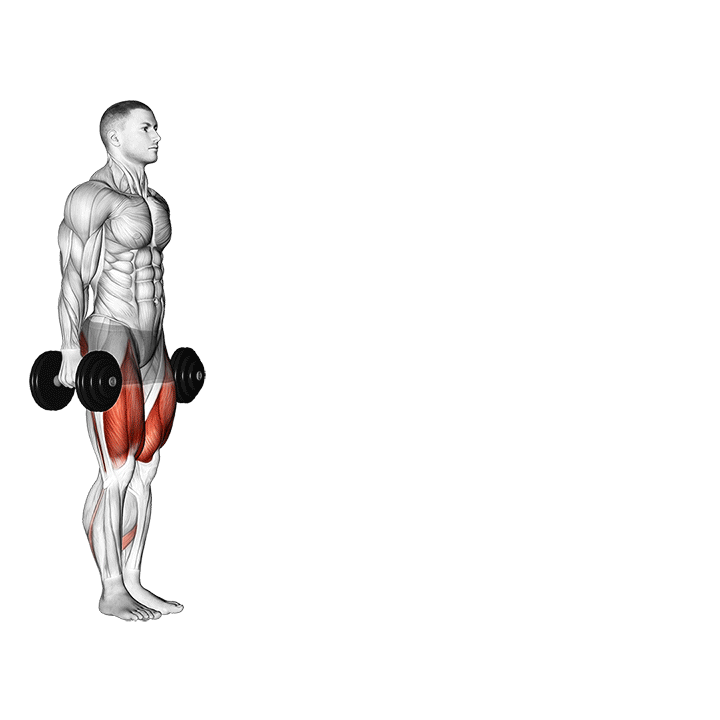
In technical terms, the dumbbell lunge is a multi-joint lower body exercise involving significant usage of mechanics like knee flexion and hip rotation to build up the muscles of the legs.
Muscles Worked by Dumbbell Lunges
Dumbbell lunges work the glutes, hamstrings, quadriceps and calves to a highly dynamic capacity.
Purpose as an Exercise
Dumbbell lunges may be used as either a primary compound exercise in a lower body workout session, or as a lower-intensity supplementary exercise to heavier compound movements like the dumbbell deadlift or dumbbell squat.
How-to:
To perform dumbbell lunges, the lifter will stand upright with their legs set slightly wider than hip-width apart, a pair of dumbbells gripped at their sides.
Taking one exaggerated step forward, the lifter will then bend at the knees until their forward-facing thigh is parallel to the floor, with the opposite leg stretched out behind them.
To complete the repetition, the lifter will simply repeat the motion with the legs switched.
6. Dumbbell Rows
When speaking of training the back muscles, one would be remiss to forget the classic row exercise - especially in regards to the dumbbell row.
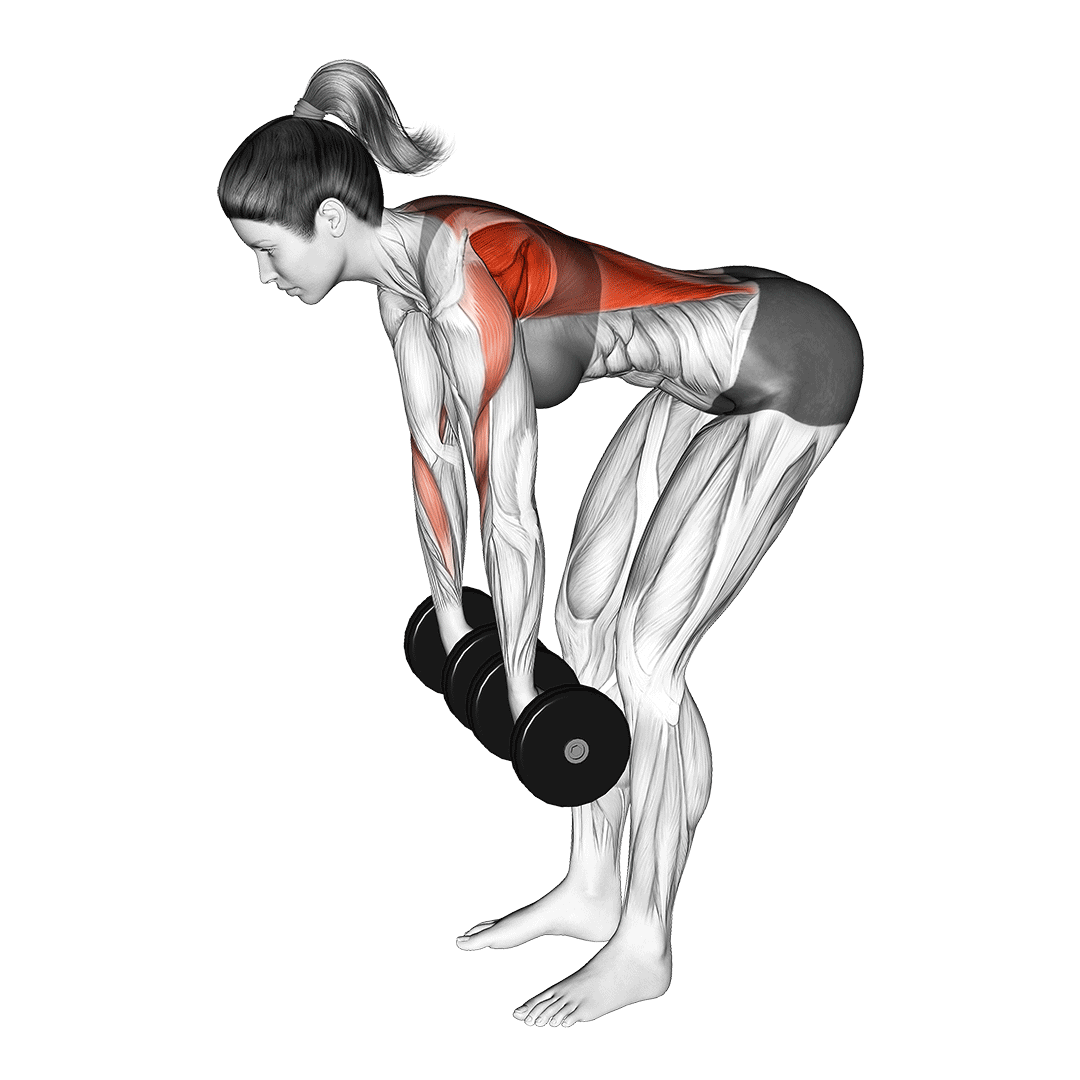
The dumbbell row is a multi-joint compound movement traditionally performed unilaterally so as to provide greater emphasis on one half of the upper body at a time.
It is frequently paired with other back muscle exercises like the pull-up or dumbbell shrug so as to develop a thicker and generally stronger back.
Muscles Worked by Dumbbell Rows
Dumbbell rows will train the majority of the back’s musculature, meaning that muscles like the latissimus dorsi, trapezius, rhomboids, the posterior head of the deltoids and the teres major will be recruited; In addition, the biceps brachii are worked as well.
Purpose as an Exercise
Dumbbell rows are one of the safest and most accessible dumbbell-based back exercises available, and are used as a primary compound exercise in dumbbell-only workouts, or as a secondary compound movement in training programs involving more than just dumbbell exercises.
How-to:
To perform a repetition of the dumbbell row, the lifter will bend over an exercise bench with one arm supporting the torso and one knee bent beneath them.
Gripping a dumbbell in their free hand, the lifter will then draw their elbow above their torso while maintaining a straight lower back. The dumbbell will be raised until it is nearly touching the torso, with the majority of the contraction taking place in the latissimus dorsi and nearby muscles.
The repetition is considered complete once the action is repeated with the opposite arm, thereby ensuring uniform training stimulus.
Frequently Asked Questions (FAQ)
Can I Do the 5 Compound Exercises Every Day?
No - performing any form of resistance exercise on a daily basis can be counterintuitive, as it prevents the body from recovering and can potentially lead to serious injuries. This is especially true for compound exercises, of which are often quite intense and involve significant amounts of weight being lifted.
Instead, it is better to take an alternate day approach where the exercises are performed in workout sessions with at least one day of recovery interspersed between said workouts.
What is the King of All Compound Exercises?
The conventional squat has earned its nickname as the “king” of all compound exercises, as it develops the largest muscles in the body and is present in nearly every serious weightlifting training program.
Though the conventional squat is traditionally performed with a barbell, it is entirely possible to perform a dumbbell squat instead.
Will Compound Lifts Give Me Abs?
Not necessarily - the majority of compound exercises do indeed recruit and develop the abdominal muscles, but well-developed abdominal muscles are not enough to have a visible six-pack.
In addition to performing compound lifts, a subsequent reduction in body fat will be needed - as well as some supplementary core isolation work.
A Few Reminders
In this article, we’ve listed the most popular and most effective compound dumbbell exercises available - but that doesn’t mean that they are the right exercises for you.
Depending on your training goals, history of injury and general training experience, there are potentially dozens of variations and alternative exercises that may better fit your needs. It is a good idea to experiment and see what works best.
And, as always, seeking out the advice of a professional athletic coach is the best route to take if you are unfamiliar with any aspect of your training.
References
1. Hendrick, Allen. (2014) “Dumbbell Training” Human Kinetics Publishing ISBN: 145044458X, 9781450444583
